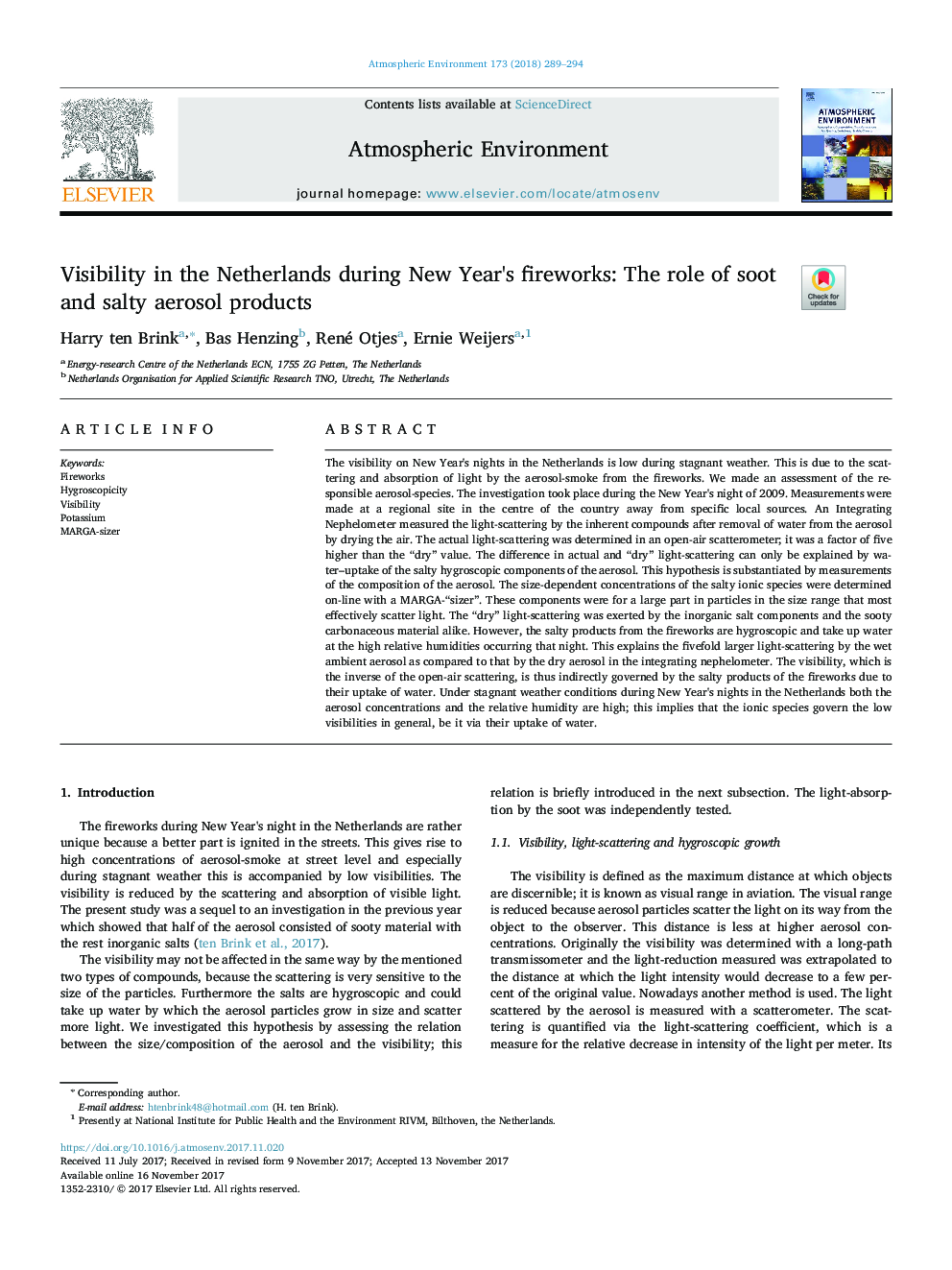| کد مقاله | کد نشریه | سال انتشار | مقاله انگلیسی | نسخه تمام متن |
|---|---|---|---|---|
| 8864299 | 1620301 | 2018 | 6 صفحه PDF | دانلود رایگان |
عنوان انگلیسی مقاله ISI
Visibility in the Netherlands during New Year's fireworks: The role of soot and salty aerosol products
ترجمه فارسی عنوان
دید در هلند در آتش بازی سال نو: نقش دوده و محصولات آرایشی شور
دانلود مقاله + سفارش ترجمه
دانلود مقاله ISI انگلیسی
رایگان برای ایرانیان
موضوعات مرتبط
مهندسی و علوم پایه
علوم زمین و سیارات
علم هواشناسی
چکیده انگلیسی
The visibility on New Year's nights in the Netherlands is low during stagnant weather. This is due to the scattering and absorption of light by the aerosol-smoke from the fireworks. We made an assessment of the responsible aerosol-species. The investigation took place during the New Year's night of 2009. Measurements were made at a regional site in the centre of the country away from specific local sources. An Integrating Nephelometer measured the light-scattering by the inherent compounds after removal of water from the aerosol by drying the air. The actual light-scattering was determined in an open-air scatterometer; it was a factor of five higher than the “dry” value. The difference in actual and “dry” light-scattering can only be explained by water-uptake of the salty hygroscopic components of the aerosol. This hypothesis is substantiated by measurements of the composition of the aerosol. The size-dependent concentrations of the salty ionic species were determined on-line with a MARGA-“sizer”. These components were for a large part in particles in the size range that most effectively scatter light. The “dry” light-scattering was exerted by the inorganic salt components and the sooty carbonaceous material alike. However, the salty products from the fireworks are hygroscopic and take up water at the high relative humidities occurring that night. This explains the fivefold larger light-scattering by the wet ambient aerosol as compared to that by the dry aerosol in the integrating nephelometer. The visibility, which is the inverse of the open-air scattering, is thus indirectly governed by the salty products of the fireworks due to their uptake of water. Under stagnant weather conditions during New Year's nights in the Netherlands both the aerosol concentrations and the relative humidity are high; this implies that the ionic species govern the low visibilities in general, be it via their uptake of water.
ناشر
Database: Elsevier - ScienceDirect (ساینس دایرکت)
Journal: Atmospheric Environment - Volume 173, January 2018, Pages 289-294
Journal: Atmospheric Environment - Volume 173, January 2018, Pages 289-294
نویسندگان
Harry ten Brink, Bas Henzing, René Otjes, Ernie Weijers,
